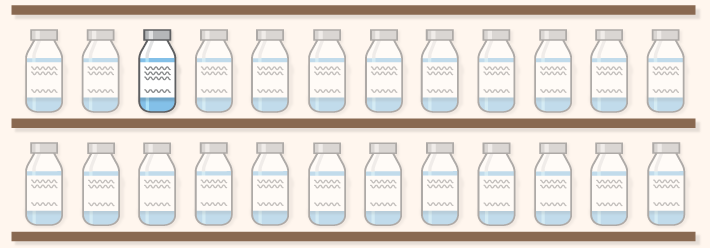Serious Medication Error Reminds Us of the Value of Testing
/ in human factors , information design , medical product design , news / by Design ScienceLast week, 15 Syrian children died after receiving measles vaccines. In what appears to have been a medication error, a muscle relaxant was used as the diluent to reconstitute the powder form of the measles vaccine, instead of the normal diluent (probably saline).
The muscle relaxant was stored in the same refrigerator as the diluent. While there is currently little information available about the manufacturer of the vaccine, it seems that the diluent packaging and labeling was insufficient to allow those preparing the vaccines to differentiate between the two types of ampoules.
Such errors are not limited to relief efforts in the developing world, however. They are, unfortunately, a regular occurrence here in the United States as well. The FDA estimates that medication errors cause at least 1 death every day and injure approximately 1.3 million people each year in the U.S. These errors arise from a variety of avoidable circumstances and design features, including:
- Ambiguous product names, concentration, and other label information
- Insufficient differentiation between similar looking products and concentrations
- Poor standard operating procedures
- Inadequate understanding of the product’s directions for use
To combat medication errors and their grave consequences, organizations such as the Institute for Safe Medication Practices (ISMP) have created guidelines for manufacturers to follow as they develop new medications and medication delivery devices. At the regulatory level, the FDA—via its Center for Drug Evaluation and Research (CDER) and Division of Medication Error Prevention and Analysis (DMEPA)—has issued the following guidances to help manufacturers through the design process:
- Safety Considerations for Product Design to Minimize Medication Errors (December 2012)
- Safety Considerations for Container Labels and Carton Labeling Design to Minimize Medication Errors (April 2013)
- Labeling for Human Prescription Drug and Biological Products (February 2013)
Generally, these guidances outline design standards for ensuring the safe and proper use of a medication’s labeling and directions. In tandem with these standards, manufacturers must rely on usability testing to verify that their designs promote the safe use of their product. Medication is an incredibly powerful tool. Its power to save a life, though, can very easily become the power to take a life without a carefully executed, strategic design process. The line between the two is as fine as the print on an ampoule’s label.
Share this entry
-
Share on Facebook
Share on Facebook
-
Share on Twitter
Share on Twitter
-
Share on Google+
Share on Google+
-
Share on Linkedin
Share on Linkedin
-
Share by Mail
Share by Mail











